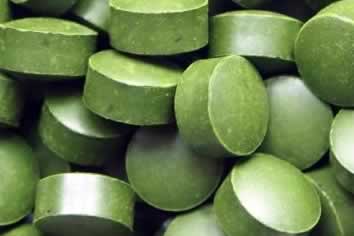Chlorella is considered as a super food being a good source of protein, fats, carbohydrates, fiber, chlorophyll, vitamins, and minerals providing many health benefits to humans and animals.
Chlorella also contains high levels of chlorophyll, beta-carotene and RNA/DNA. There are more than 20 vitamins and minerals found in chlorella, including folic acid, inositol, iodine, iron, magnesium, PABA, pantotheneic acid, phosphorous, potassium, proteins, RNA/DNA, vitamins A, C, B1, B2, B2, B3, B5, B6 and B12, E and K, zinc which is beneficial in maintaining overall health.
In medicine, chlorella has been known to benefit those who have cancer by reducing radiation treatment side effects, stimulating the immune system and improving response to medicines and, increasing white blood cell counts.
Other claimed health benefits from Chlorella include its protective effect against toxic metals such as lead and mercury. Chlorella is also beneficial to the immune system and helps fight infection. It has been shown that it can increase the amount of good bacteria in the gastrointestinal tract that benefits those who have ulcers, colitis, diverticulosis and Crohn’s disease.
Chlorella’s other health benefits include the treatment of constipation, bad breath, high cholesterol, fibromyalgia, high blood pressure, asthma, sexually transmitted disease called trichomoniasis, PMS and improve mental health.

 Commercially available chlorella in the U.S. are from Japan, China, Taiwan and Korea. Those that are from China are the cheapest but the quality and purity may be lower compared to those coming from higher priced chlorella from Taiwan.
Commercially available chlorella in the U.S. are from Japan, China, Taiwan and Korea. Those that are from China are the cheapest but the quality and purity may be lower compared to those coming from higher priced chlorella from Taiwan.

